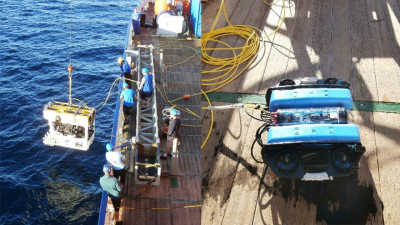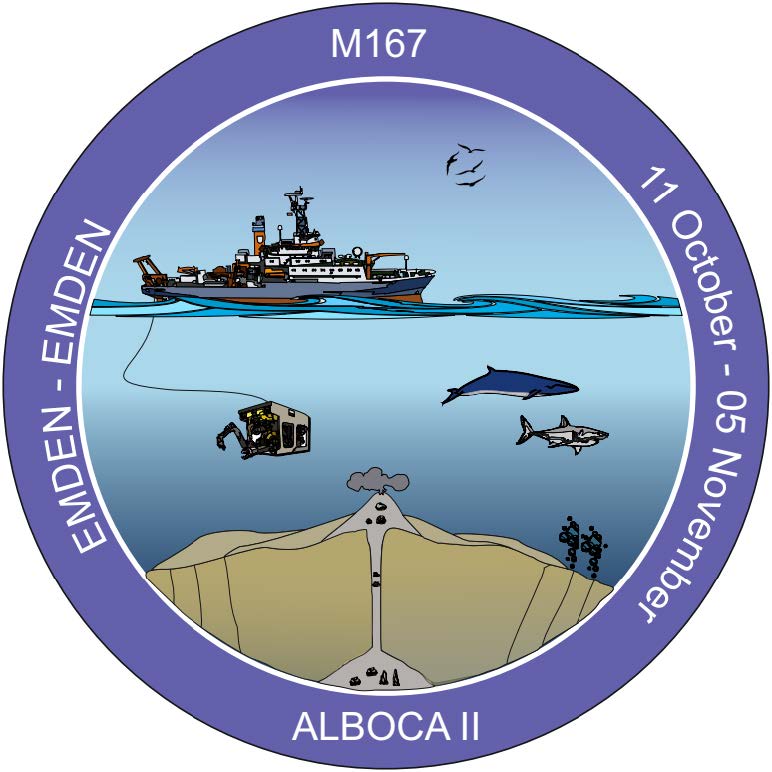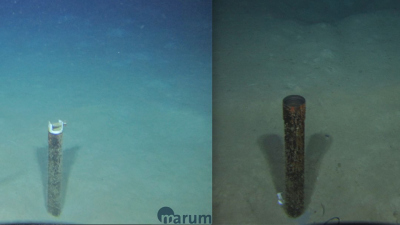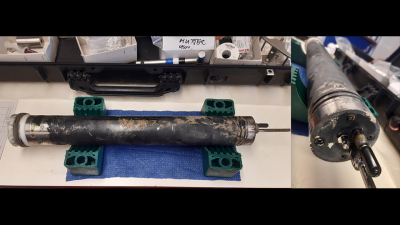First successful work with underwater robots during the expedition M167
A scientific team of 15 Postdocs, Technicians, undergraduate and postgraduate student, representing an astonishing number of 8 nationalities, is currently operating both MARUM ROV SQUID (2000m capability) and an off-the-shelf smaller BlueRobotics ROV (modified and increased in payload by MARUM as part of EUMR) to undertake a number of exercises such as
- Recover the borehole instruments as part of a TNA (transnational access) project between MARUM and the CSIC-CMIMA Barcelona
- Test a newly developed fluid sampler with ROV SQUID
- Carry out exercises that demonstrate collaboration between ROVs SQUID and BlueROV
- Use state-of-the-art photo- and video-mosaicking techniques on active mud volcanoes to retrieve quality imagery of sites of fluid emission
- Ground-truth some of the above by traditional sampling (push cores from ROV, gravity cores from RV METEOR).
We have completed the transit from Emden, Germany, to the Alboran Sea and had three dives there where we successfully recovered the MeBo borehole observatory, took push cores, and carried out high-resolution video surveys of the seafloor near the Carboneras fault. The transit to the Atlantic went smoothly and more observatory and mosaicking duties are awaited by the team. The data (to be) collected will help unravel the nature and deep-seated processes along the plate boundary fault system between Africa in the south and Eurasia (in this case the Iberian Peninsula) in the north, which is characterised by regular earthquake activity and its associated processes and which changes its properties and geometry when running through the Straits of Gibraltar through the entire Mediterranean Sea.
Link to the expedition page
More Information about MARUM-MeBo
More Information about MARUM-Squid







